Musings
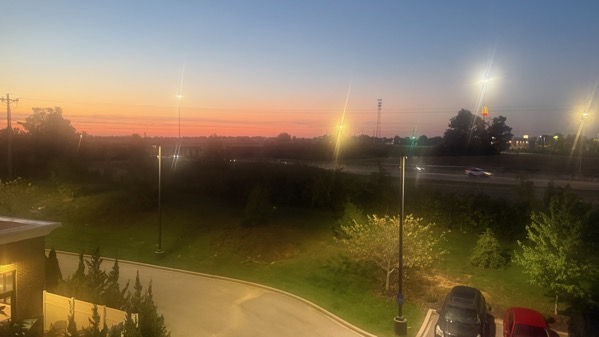
I liked the colorful early sky, even with the mist on our hotel room’s window.
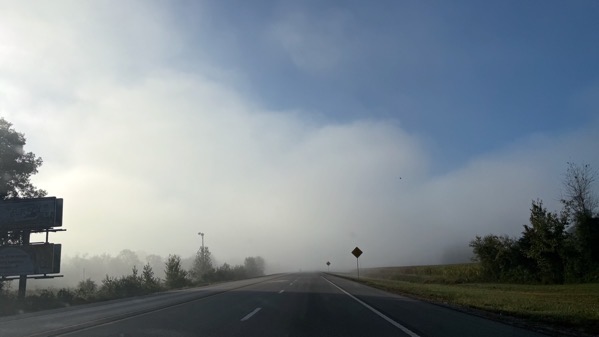
The morning was quite clear, however, as we continued to avoid the interstates. We encountered a fog bank that continued for several miles southwest of Lebanon, KY.
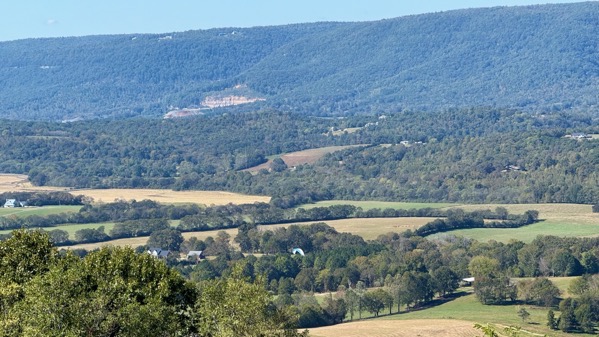
Later, we found a stunning view of the Sequatchie Valley just east of Dunlap, TN. Below center is what I think is called a parafoil (a huge kite, blue-green in this case).
We mostly took back roads today, like yesterday. This was also true in the greater Atlanta area, where traffic snaggles were abundant. JCB knew assorted back ways that had few vehicles, in contrast to the choked main roads.
So glad to be home, although our time in the UP was exceptional and the drive was lovely.
Posted at 8:17 PM |
Comments Off on Bits
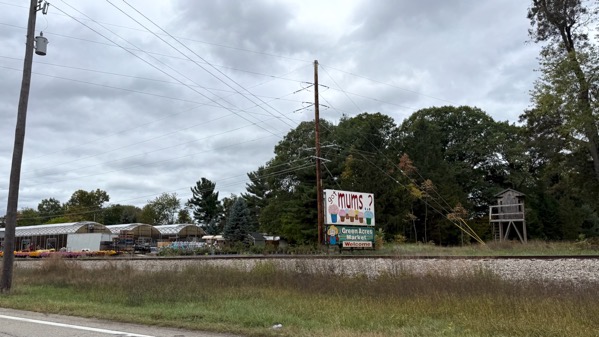
Our morning began west of Traverse City, and therefore off our typical I-75 axis. Pleasantly. So, we stayed west of I-75 all through Michigan, where farm stands selling pumpkins and big pots of mums were abundant. Look for mums on the far left between the arch-roofed structure and the RR tracks.
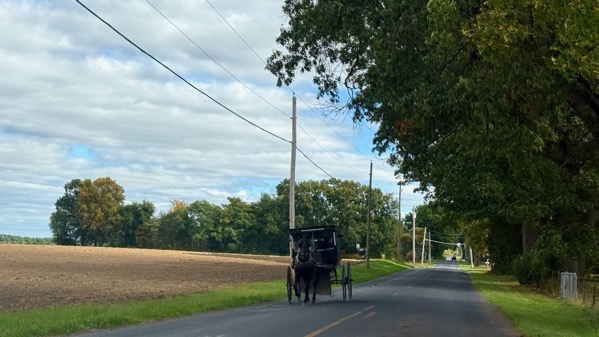
Our trajectory took us through the “heart of Amish country,” Shipshewana, Indiana. Hence: buggies and many farms with paddocks of horses. We even saw a four-horse team on the road, but pulling no farm equipment, only the driver’s platform with an empty hitch-bar.
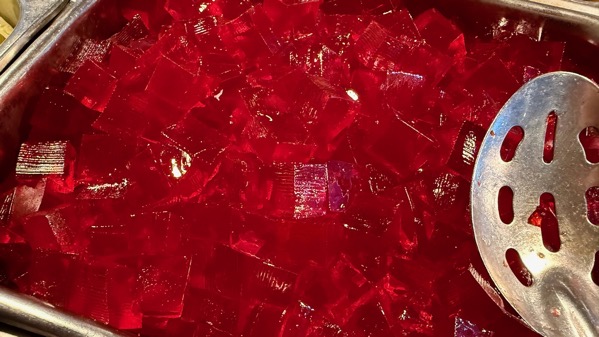
We decided on a buffet dinner (a vast improvment over Arbys and the like). The offerings of course included red jello. [Not sampled.]
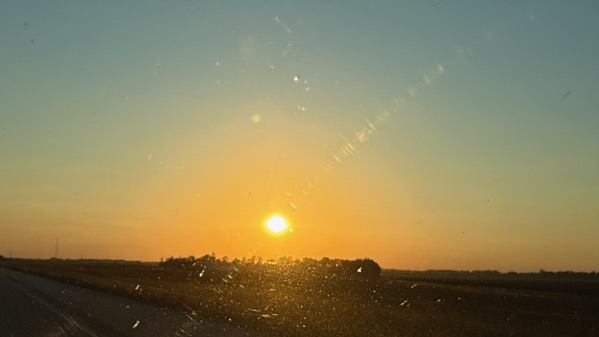
And here’s today’s sunset, complete with windshield flares. No Great Lake in Southern Indiana, even a bay of a smallish lake, although we did pass by Big Lake at some point.
Posted at 7:03 PM |
Comments Off on Ah, the Midwest
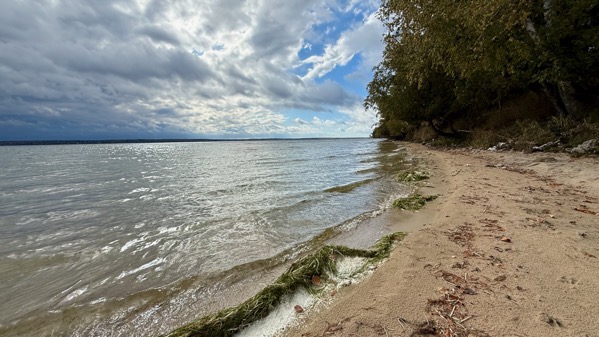
Lotsa chores, but I made it to the beach in the early-mid afternoon…
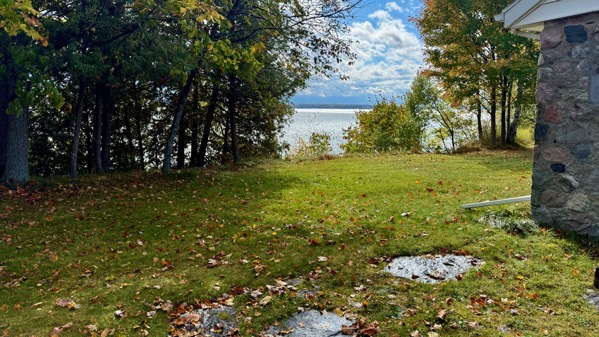
…just as the sun was starting to chase the clouds away.
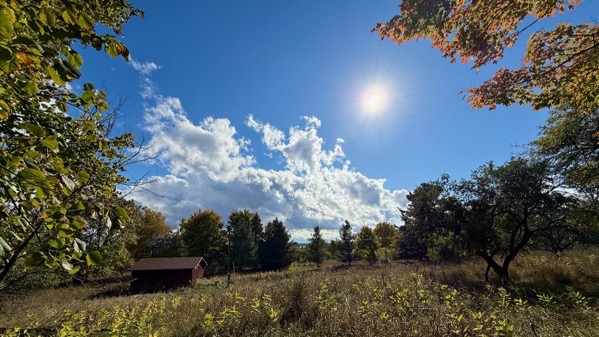
View south from the grove. You can’t see the lake from this angle, but it’s tucked in there.
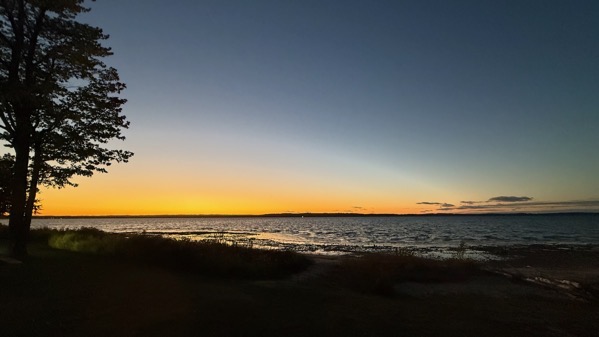
Proof we got off the property: this is looking across the inner arc of the East Arm of Grand Traverse Bay.
Posted at 9:34 PM |
Comments Off on Moving along
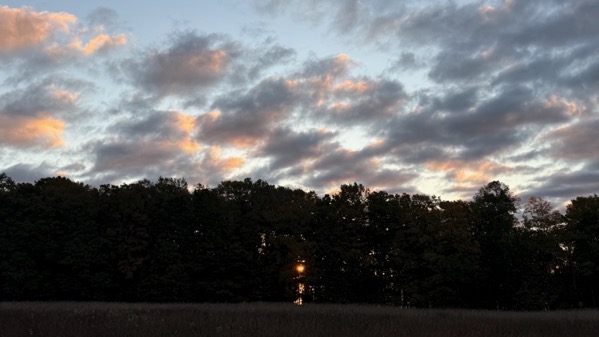
I slept in (so no sunrise shot), and I needed it (I like to think), soooo-kay.
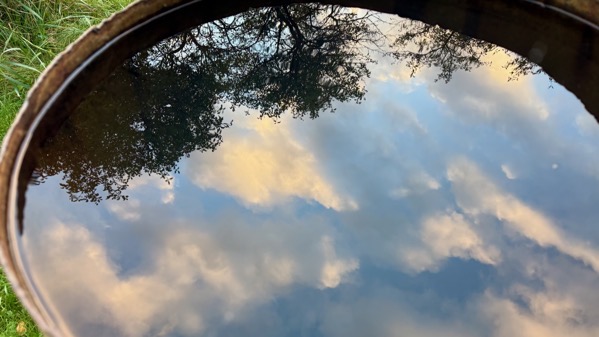
Bonus, when I went out for the through-the-trees shot, I spotted this.
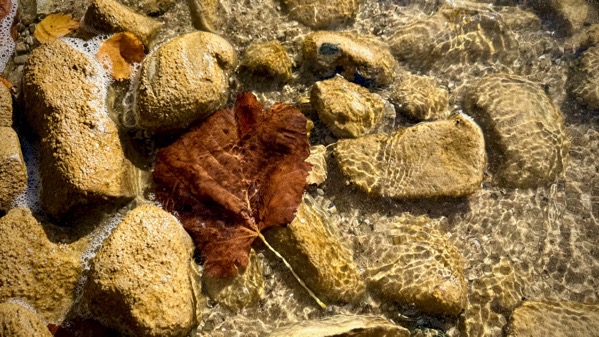
Later, I visited the beach, and spotted: leaf that had swimming lessons.
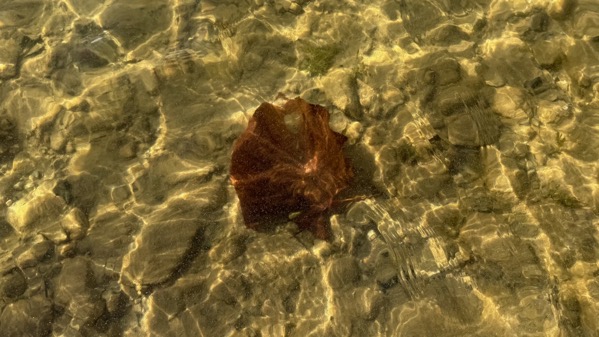
And, similar leaf (scale distorted): no swimming lessons.
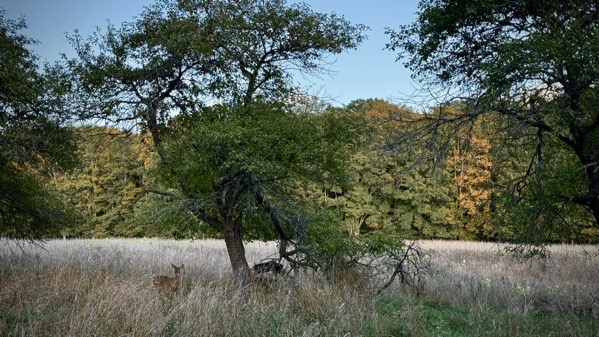
I went out for a late-day sun-on-the-trees shot, and the sun went away at the same time I spotted *three deer under the apple tree* (really: there are two you probably can’t spot), which Taylor Swift might want to turn into a song lyric. 🤣
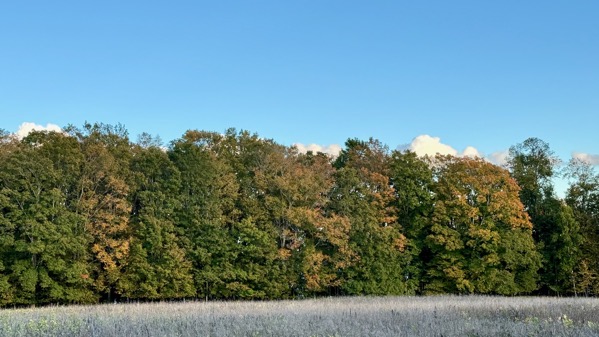
I took a photo of the trees even though the sun was gone. Ya get what ya get, is that the theme of today?
Posted at 7:04 PM |
Comments Off on Find a story; make a story (vestiges)
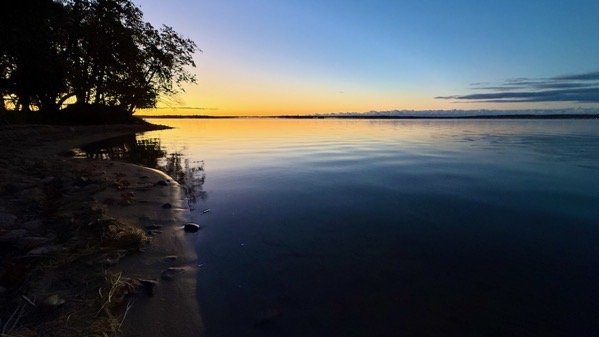
Sun’s coming.
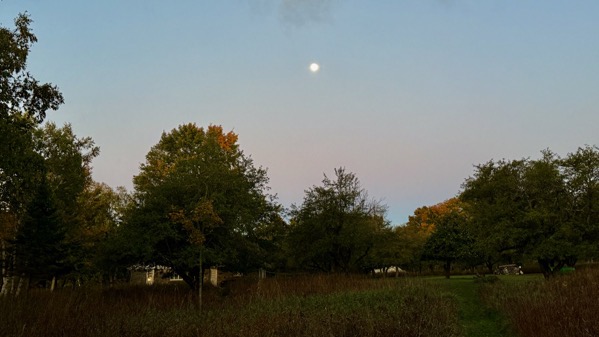
[Opposite direction….] Moon’s up.
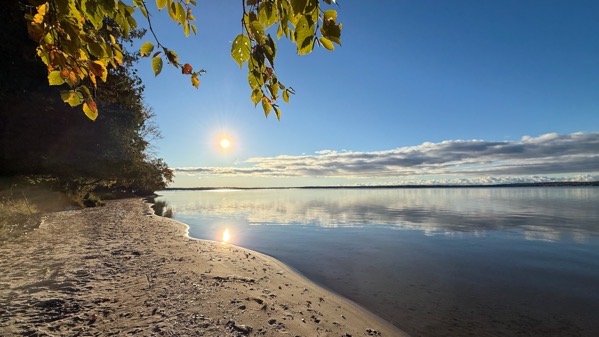
[After two cups of coffee….] Sun’s up.
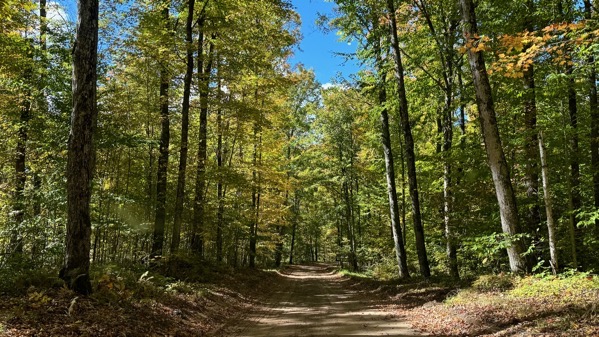
[In the afternoon….] We drove north through the woods, with abundant dappled light.
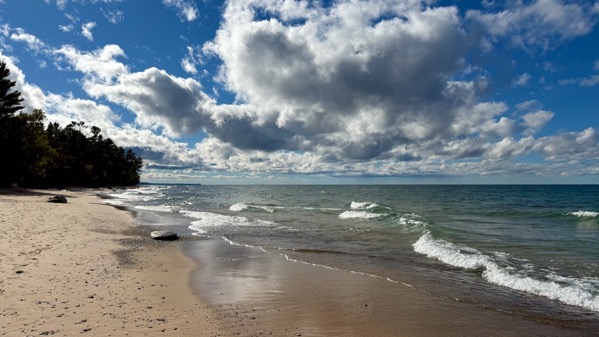
We arrived at Gitchee Gumee.
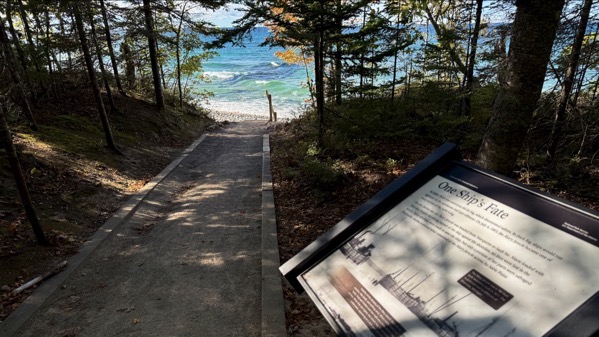
Note the dark spot past the end of the path. That’s the shipwreck discussed in the new sign (which was taped off last week).
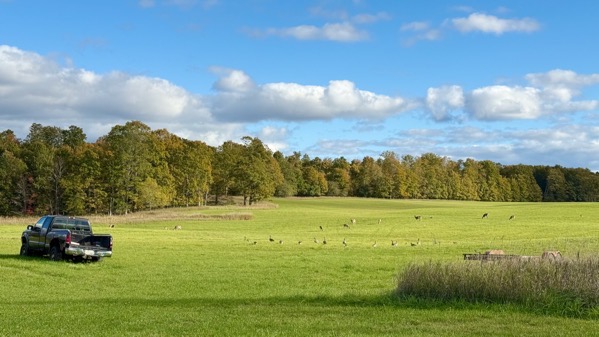
Welcoming us to the cottage: a flotilla of Canada geese (uncounted) and a modest herd of deer (thirteen).
Posted at 8:16 PM |
Comments Off on Busy un-busy day
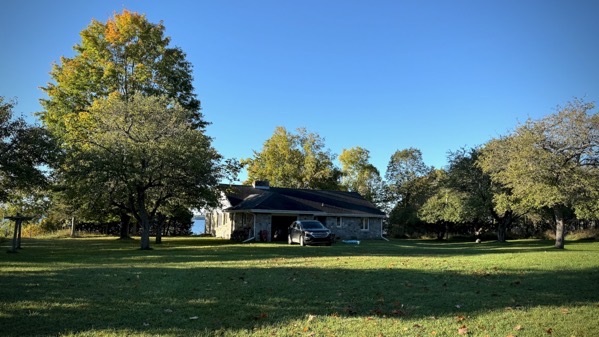
On my early walk, I saw our nearest neighbors working on exiting. Sigh.
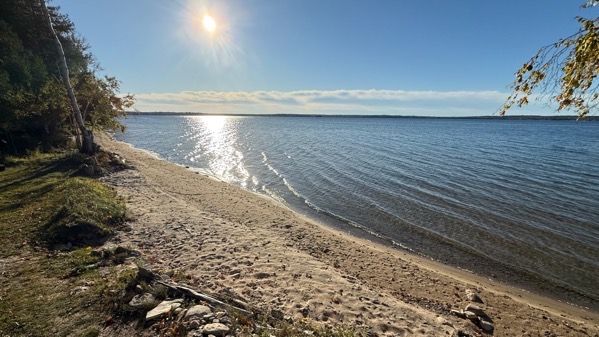
At the beach, the sun glowed warmly, nurturing life.
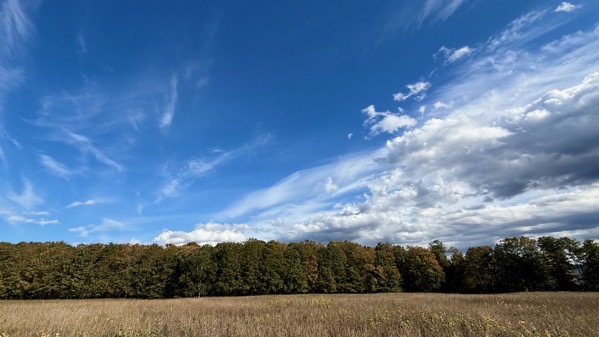
Here’s the afternoon sky, and you can see the leaves are slowly turning on the face of the woods. [It’s much quieter, it seems, with the neighbors gone.]
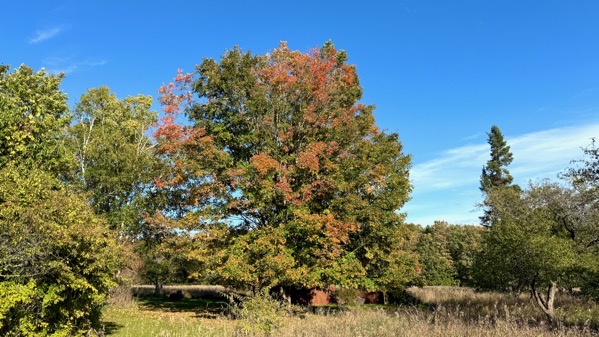
Meanwhile, the Uncle Dave maple is turning faster.
Posted at 8:26 PM |
Comments Off on Autumnal pacing
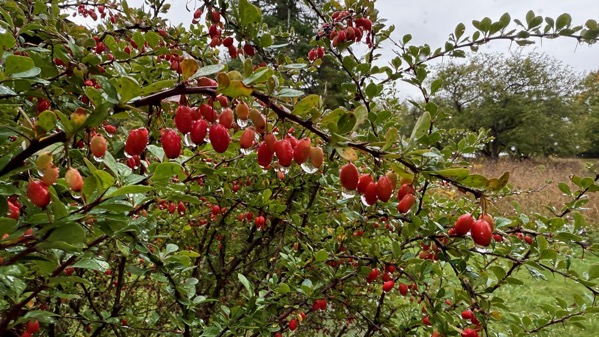
The overnight rain lasted into the morning, but I was antsy to get out, and headed…
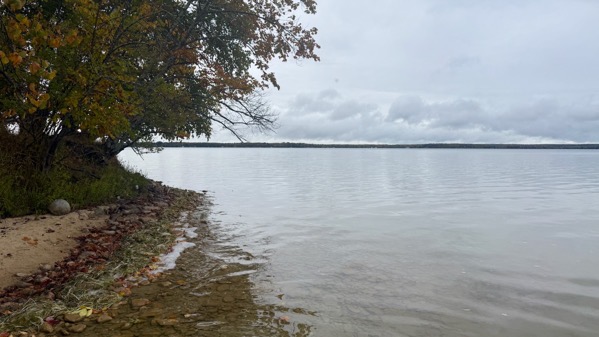
…down to the beach where I found windrows of chara and phragmites (water plants) thrown up by the wave action.
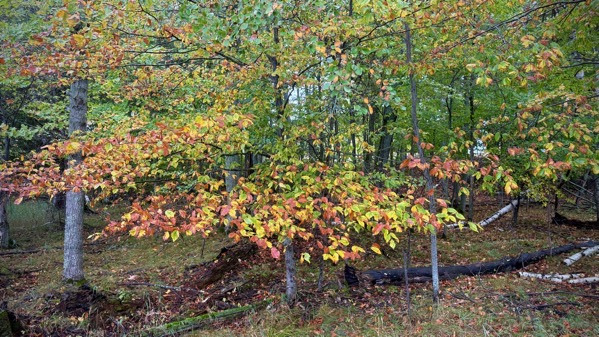
Here’s looking into the woods near the last spot.
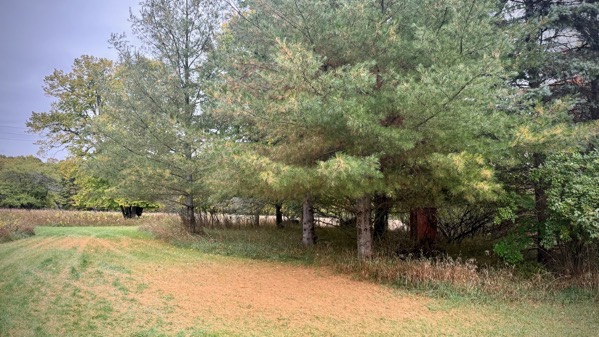
All that weather also launched the autumnal needle drop.
Posted at 8:38 PM |
Comments Off on Walking in the final drips
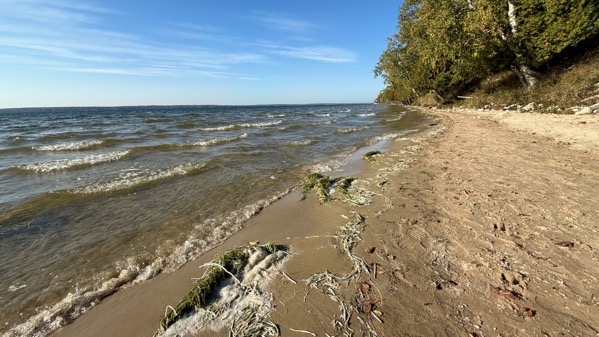
When I visited the beach this morning, it was after, I’m guessing, at least a day of windiness…that is, most of yesterday and overnight…hence the floral detritus the waves are depositing on the sand.
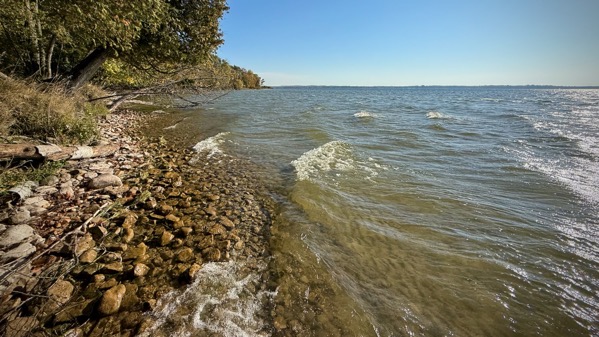
When I went around the point, I could see that the last of the neighbor-docks is now in for the winter….
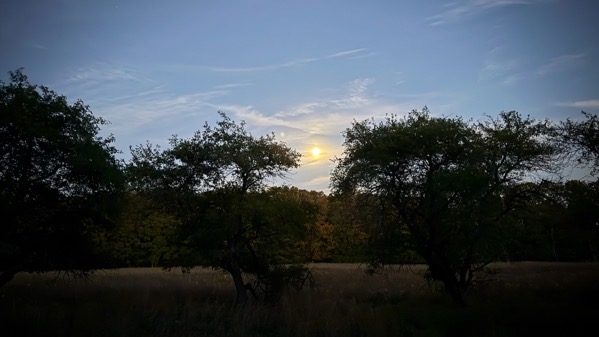
This evening, I went out for a moon-shot…in the sense of this is the moon, although it looks like funky daylight.
The windiness continues, and is expected all night and into the morning, and I think for another day or more.
Posted at 8:09 PM |
Comments Off on Windy world
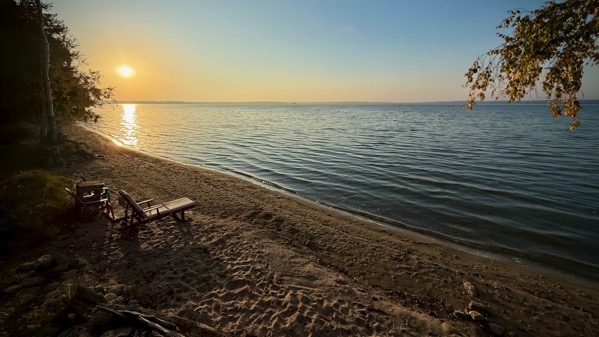
I went down for the (just after) sunrise, and, whoohoo, it’s a new world—the dock is stashed for the winter…which is unarguable evidence that we are well into autumn.
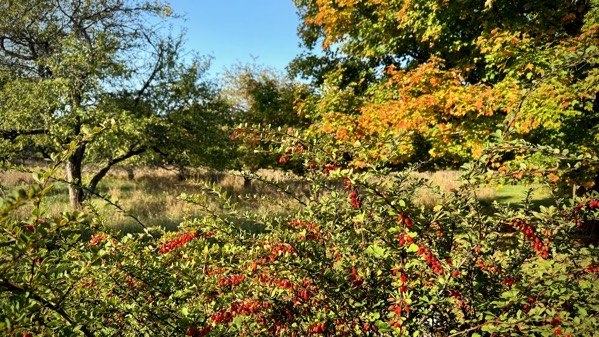
Yup. Further evidence on the barberries (foreground), and maples (background, right). Time for different angles…
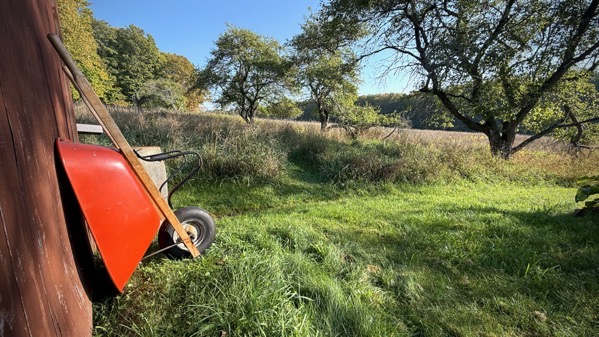
Okay. Here’s a something-new photo angle (for me).
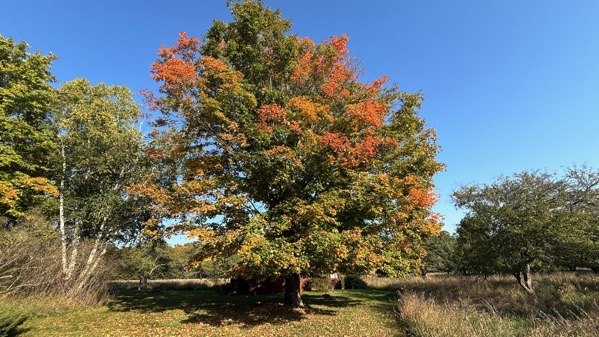
This, it may be argued, however, is the same old view-from-the-west-with-the-sun of the Uncle Dave Maple.. Dunno. I’d argue it’s new every year. Even though it’s the same tree and viewpoint.
Posted at 8:06 PM |
Comments Off on You parse it
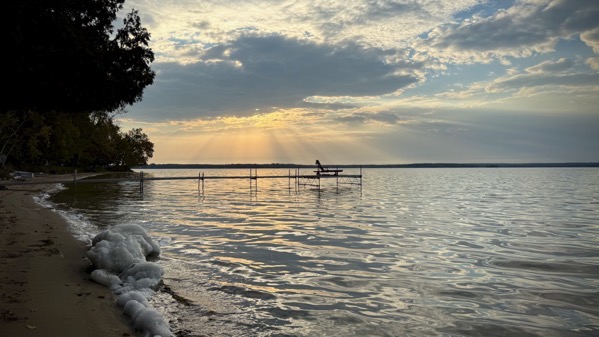
With the sun already up, I chose the long view, from way down the beach, past the dock.
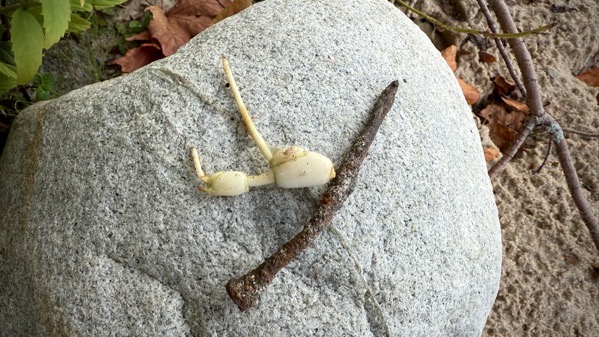
I spotted this white thing in the wrack line, and on first view thought: is that a funny earbud?
Nope. Some type of white root with nodules. With a large rusty nail.
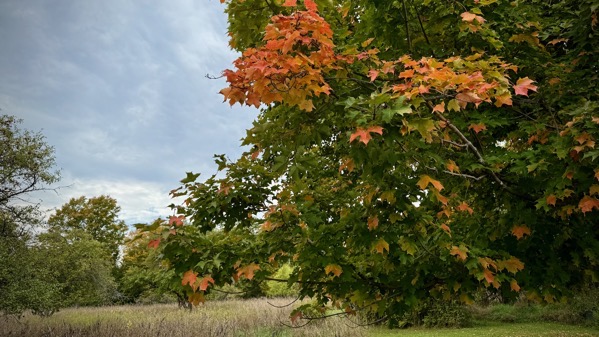
Meanwhile, the maples are changing slowly and unevenly. As usual.
Posted at 7:47 PM |
Comments Off on Pretties









































